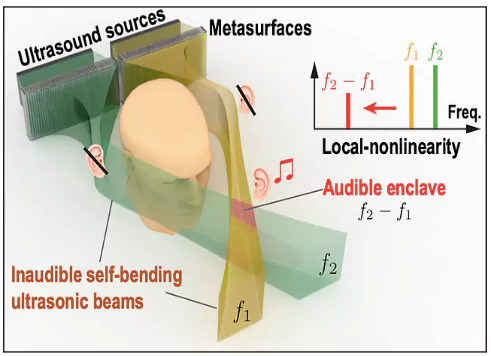![]() 21 Mar 2025
21 Mar 2025

Researchers from Penn State University have developed a new technique to create audible enclaves that can be heard only at specific locations.
What is sound?Sound is a vibration that travels through air as a wave. These waves are created when an object moves back and forth, compressing and decompressing air molecules. |
|---|
 Two ultrasound waves at different frequencies are projected into space.
Two ultrasound waves at different frequencies are projected into space.<div class="new-fform">
</div>